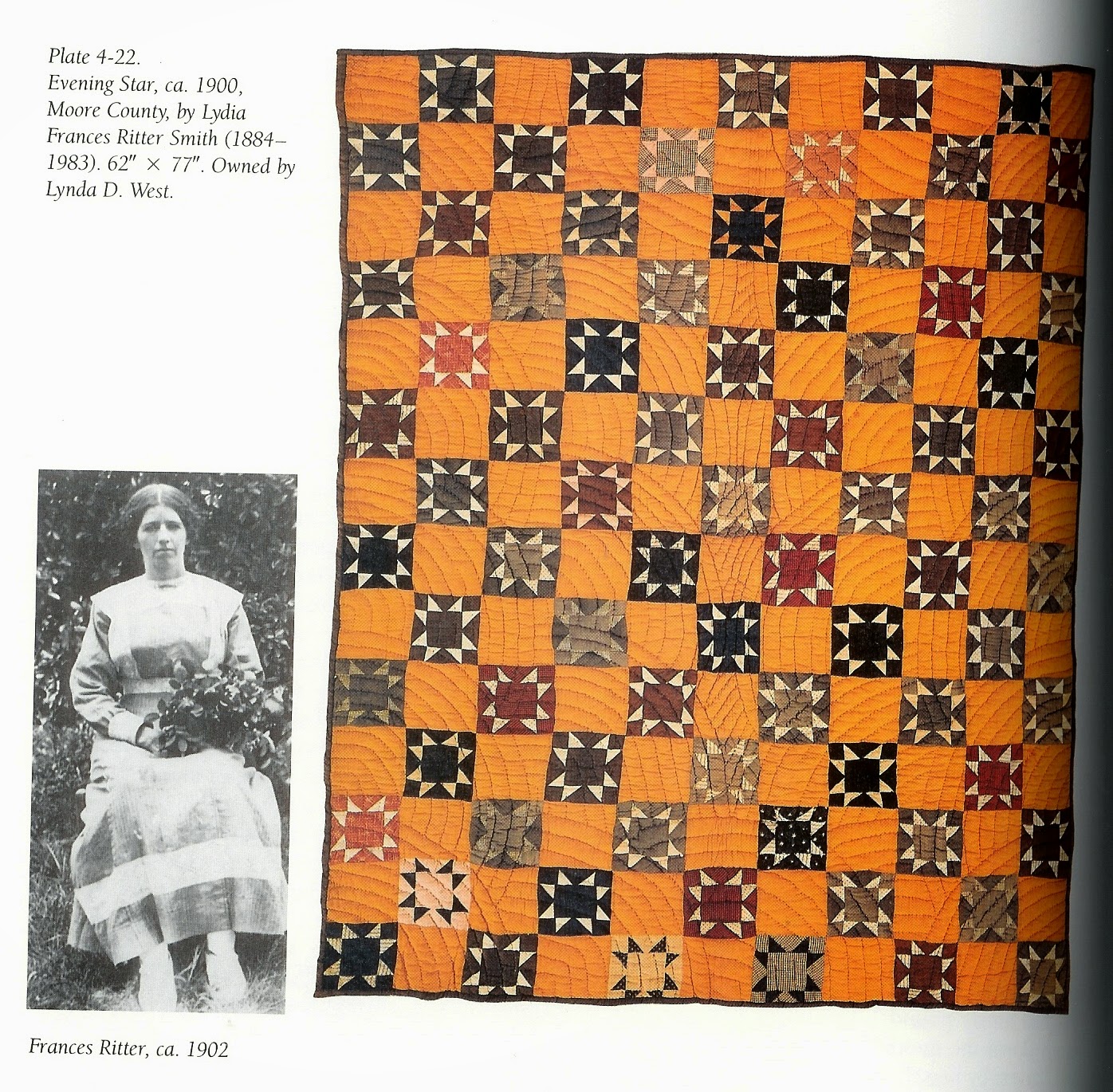We had a wonderful guild program on Monday evening, presented by none other than the
Salem Stitcher. The program was based on this book,
North Carolina Quilts, that is a compilation of the data and stories collected during the North Carolina Quilt Project which documented 10,000 quilts across this state from September 1988 until January 1989. The quilts represent the quiltmaking tradition of the women of North Carolina from 1800 to 1976. I've had the book for decades, I've read it cover to cover, I even attended a showing of some of the quilt collection at the NC Museum of History 25 years ago. But, through their stories, the presentation this week brought alive to me, once again, the stories of those early quiltmakers and what they endured to cover their loved ones, and their beds, with beautiful handmade quilts. These are stories of perseverance and dedication. I was listening, intently, and realize there are no excuses for me, in this time, NOT to finish what I have started with all that is so readily available to me. I cannot say, in all good conscience, that "
I have no time" if I dare to look back at history and these stories from our quilting foremothers:
 |
"Lydia Frances Ritter (Smith) (1884-1983) Grew up on a farm in Moore County. One of eight surviving children, she knew the importance of hard work and excellence. All of her life she heard stories of how her grandfather helped sustain the community after the Civil War. Her mother was descended from prominent Revolutionary War gunmakers, the Kennedys of Philadelphia, a branch of whom carried on theor artisan tradition after relocating to Moore County. North Carolina farmers of the era were generally quite self-sufficient. With few exceptions, they grew and produced within their own acreage almost everything needed to sustain life. A cash crop provided them with credit to purchase supplies at a nearby country store. Family tradition and strong religious faith formed the moral backbone of their lives. No work was ever done on the Ritter farm on Sundays. In spite of threats of damaging weather approaching, no harvest took place on the Sabbath. Frances's father simple stated, "God knows my crops are in the fields." Resourcefulness and responsibility were keystones in Frances Smith's life. It was she who remained on the farm to care for her elderly parents. After their deaths this small woman (she weighed ninety pounds), her uncut hair parted severely down the middle, continued to plow, plant and harvest by herself. Her marriage to Hallie Smith came after she turned fifty.
Much of the cloth Frances used in her quilts was recycled. She carefully unraveled the string from feedsacks, wound it into hanks, and tossed it into the dyepot with her cloth, to use as quilting thread. The batting was "yellow cotton" gathered from the farm, unopened bolls left in the fields that opened after the first frost. Her Evening Star quilt (above) is especially noteworthy in that it is made from alternate plain blocks, whereas most quilts of this era are made with plain, wide, single sashing. This was an old an classic pattern that lent itself well to a scrapbag palette. Frances was proud of her quilts. Like many old houses, the Ritter homeplace had been built without closets, making storage a problem. When not in use, her quilts were stored on a "quilt table", a simple four-legged structure on which they were folded and stacked. Because she dyed most of her own fabric, using both commercial and natural dyes, she knew that the colorfastness of her fabric and thread was vulnerable. To protect her quilts, a heavy window curtain known as a "tielet" was hung from the wall behind the quilt table and drawn around the quilts to keep the sunlight from fading them. Late in life (she was still quite alert well past her ninety-eighth year) she made sure that her niece, who is heir to the quilts, knew their stories and the family remembrances that are part of them." - from North Carolina Quilts, 1988, The Univesity of North Carolina Press, Chapel Hill & London.
This is one of hundreds of such excerpts contained; if you enjoy history, and quiltmaking, you'll love this book. I plan to reread mine, and be inspired, all over again!
Life is Good!
|














6 comments:
I'm glad you liked the program! I enjoyed giving it. Each time I revisit the book, I'm reminded of why I started quilting in the first place and how much it really means to me. I love the thread that binds us to the past.
Yes what we have for daily chores compared to what previous generations had to do daily there is no excuse not to finish our quilts/projects. I'll have to try to get that book through the interlibrary loan system.
Great article! The wonderful creations by lantern or even gaslight are amazing. We all have the same 24 hours a day and don't even have to produce our own food. Making the most of it is a good thing!
So interesting. I have the book from my state's quilt study. I find it fascinating--even found the quilt of a distant relative in it.
Frances sounds like an amazing woman!
I may have to dig out my quilt history books and really read them instead of getting distracted by the pretty pictures. Hopefully I will find the motivation to quit my "playing" and running after distractions and finish those UFO's. Hopefully
I love, love these stories and have several books on quilts and their history. They make me feel guilty though for how little I do. blessings, marlene
Post a Comment